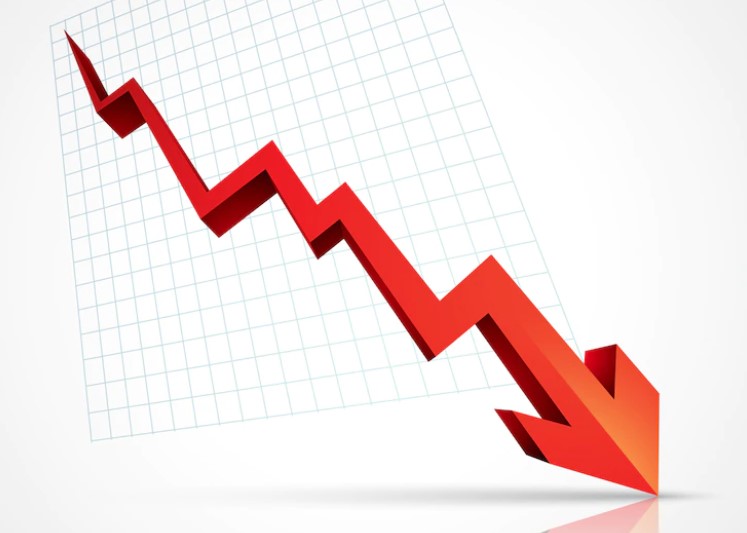Stocks dipped on Thursday, ending a tumultuous quarter in the negative, as investors assessed President Joe Biden’s decision to release the largest amount of oil ever from the country’s strategic petroleum reserve to cool rising energy costs.
The S&P 500 index fell 1.6 percent, while the Dow Jones Industrial Average lost 550 points. The Nasdaq Composite Index fell 1.5%. Stocks had their worst quarter in two years due to the developments. WTI crude oil futures fell 6.6 percent to around $100 per barrel.
President Joe Biden announced plans to release 1 million barrels of oil per day from the US Strategic Petroleum Reserve starting in May for the next six months in the largest release ever to lower gasoline prices at a White House ceremony on Thursday. Energy prices have risen dramatically in recent months, notably since Russia invaded Ukraine on February 24.
“For the globe, this is a moment of consequence and peril, and for American families, this is a time of pain at the pump,” Biden added. “As a result of Russian President Vladimir Putin’s activities, our prices are rising,” he remarked. There isn’t enough to go around. And the bottom line is that we need more oil supply right now if we want lower gas prices, “Biden stated the following.
Meanwhile, Russian forces continued to bombard Kyiv and northern Ukraine, despite rumors that Moscow had agreed to scale back its military presence in the region during recent peace talks in Istanbul. According to the United Nations, the number of people who have fled their homes to escape the invasion in Ukraine and seek shelter has surpassed 4 million.
Stocks have had a rocky start to the year, with various factors roiling financial markets, including geopolitical unrest, increasing inflation, supply chain imbalances, and central bank monetary tightening.
Despite this, the S&P 500 is up 11% from its lowest point of the year in early March as of Tuesday’s close and is just 4% away from setting a new all-time high after a recent rally. Despite some day-to-day choppiness, the momentum is likely to continue based on more than seven decades of data.
“The good news is that equities seem to adore April,” LPL Financial chief market analyst Ryan Detrick wrote in a report, noting that the month has ended in positive territory every year since 2006, except for 2012. “This is the best month on average since 1950, but it has also been higher in 15 of the previous 16 years.”
Despite an optimistic forecast for the month ahead, market players are concerned about another past track record. Investors are warily scrutinizing a flattening US Treasury yield curve, with longer-duration bond yields falling more rapidly than shorter-duration bond yields as traders bet on rising Fed rates in the near term and assess a murky macroeconomic picture in the long-term.
Earlier this week, the spread between 2-year and 10-year Treasury note yields dropped to its narrowest level since 2019 and temporarily flipped on Tuesday. The phenomenon has a history of predicting recessions, with a yield curve inversion preceding each of the last eight recessions dating back to 1969.
However, JoAnne Feeney, a partner and portfolio manager at Advisors Capital Management, told Yahoo Finance Live, “We don’t want to get too focused on the yield curve issues where some folks are thinking that’s predicting a recession.” “We believe it is extremely risky at this time to try to predict what will happen today by using prior occurrences of yield curve inversion.”
Feeney cited near-record high job vacancies (the Labor Department’s Job Openings and Labor Turnover Summary [JOLTS] was 11.283 million in January) as evidence that the US economy is still recovering from COVID-like activity.
According to the Labor Department’s weekly jobless claims report released Thursday, the initial unemployment claims ticked up slightly from the previous read to 202,000 after hitting a 50-year low. According to Bloomberg data, economists had predicted a reading of 196,000.
More job data is coming this week, including the all-important monthly unemployment report for March on Friday, which Bloomberg economists forecast to show another strong reading of 490,000 new positions.
In a busy week for labor market surveys, ADP reported that private-sector payrolls increased by 455,000 in the previous month, despite persistent labor shortages and significant vacancies.
Plastic waste is a big problem that the world is dealing with these days as it does not go away easily, that is why it is estimated that our plastic waste would quadruple by 2033. Visit this blog post to learn more.



